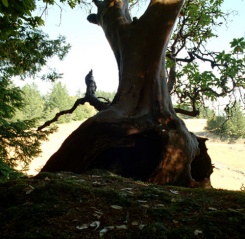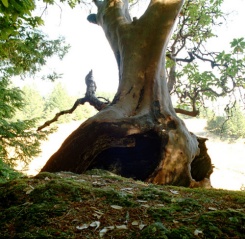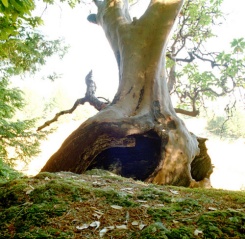
Update: we now have a full hands-on preview of Lost Coast.
21 Sep: we also have benchmarks, and an exclusive gameplay video.
Parents these days are keen to encourage their children to learn a second language: French lessons are a staple of the British education system; many American students learn Spanish, reflecting the growing cultural diversity around them; Mandarin Chinese is taught to Australian school kids at a younger and younger age each year in the belief it will be an indispensible tool for them when they grow up.
But one language alien to nearly everyone is 3D graphics geek-speak: very few people aspire to become fluent in this bizarre language, and those that do go and work for ATI or NVIDIA. I remember the good old days, when a polygon was a polygon, and a texture was a texture. These days, it's all about cubic environmental displacement bump mapping and volumetric lighting rendered through a unified shader architecture, and the like.
Well, I'm here to tell you that there's a new buzzword in town, and this one you're going to want to know about... Today we are exploring HDR lighting, and looking specifically at its implementation in the forthcoming Half Life 2 level, the Lost Coast.
What is HDR?
HDR stands for High Dynamic Range, and is also sometimes referred to as High Dynamic Range Imagery (HDRI) or High Dynamic Range Rendering (HDRR). The Dynamic Range is the ratio of the largest value of a signal to the lowest measurable value. Current 16-bit integer-based formats use colour component values from 0 ("black") to 1 ("white"), but don't allow for what is known as "over-range" values, for example, a whiter-than-white highlight glinting off a piece of metal.HDR facilitates the use of colour values way outside the normal range in an effort to produce a more realistic rendering of a typical 3D scene. If you have ever driven through a dark tunnel in your car, and then emerged out the other side into blazing sunshine, temporarily blinded by the difference in light levels - that oversaturation is one example of what is possible with HDR
Here is a quick example of HDRI, courtesy of the OpenEXR website - OpenEXR is one standard of HDR developed by Industrial Light & Magic, the world famous California-based studio responsible for almost every eye-popping CG and special effects sequence since Star Wars in 1977.



The original image is on the left: the tree in the foreground is very dark because the overall exposure was influenced by the very bright light in the distance. The middle image is 3 stops brighter, and the right image is 7 stops brighter: the tree detail is now easily visible, and the field in the background is overly bright.
For the average enthusiast, there are only three things to remember about HDR:
<ol><li>Bright things can be really bright</li><li>Dark things can be really dark</li><li>And the details can be seen in both</li></ol>HDR is the latest feature in the quest for greater rendering fidelity: Crytek have already added it to Far Cry as part of their 1.3 Patch and it is integral to Epic's Unreal Engine 3.0. Valve recently revealed that they are working on a special HDR showcase for Half Life 2 titled Lost Coast. Whilst Far Cry only implemented HDR via Shader Model 3.0, hence only working on Nvidia's latest-generation cards, Lost Coast will implement it via Shader Model 2.0, allowing for it to work on ATI's current generation.
We spoke to Director of Marketing, Doug Lombardi, about Valve's implementation of HDR into Half Life 2 and its Source engine.

MSI MPG Velox 100R Chassis Review
October 14 2021 | 15:04









Want to comment? Please log in.